#anishinaabe
Text
“Grandma’s House is not like a drop-off daycare or an immersion school where only the children learn. Through a grant from the Blue Cross and Blue Shield of Minnesota Foundation, parents get paid to learn alongside and speak with their children in Ojibwe five hours a day, four days a week.
…
‘Learning Ojibwe in college and pursuing learning the language and teaching the language, I hadn't really thought about babies speaking it as their first language,’ Erdrich said.
‘It seemed like this impossible thing because of how much work it would be, how hard it would be to have a whole community and other babies to be speaking Ojibwe, but it's happening! And it's amazing because it's the peer language here so the kids are speaking Ojibwe to each other,’ she said.
…Grandma’s House is not like other college language programs. Learning a Native language in an academic setting is beneficial for language revitalization, but academic learning does not usually include learning the traditions, heritage or spirit within a Native community.
…
Although it’s common to refer to a language no longer commonly spoken as a ‘dead language,’ some people in the language revitalization movement instead refer to them as ‘asleep.’ The idea is that sleeping languages can be awakened through family and community efforts.
Waking up Native languages can also bring intergenerational healing.”
#linguistics#language#sociolinguistics#language and identity#language and culture#language and power#langblr#language learning#language acquisition#language revitalization#ojibwe#anishinaabe#minnesota#indigenous#indigenous languages
9K notes
·
View notes
Text
"Be cunning, and full of tricks, and your people will never be destroyed"
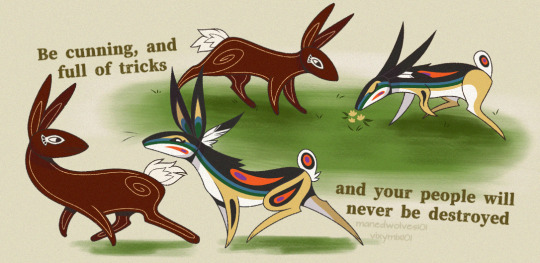
Okay for context the other rabbit is nanabozho! (Also called Wenabozho, Nanaboozhoo, Nanabush and Manabozho, they have a lotta names--) and he's a prolific and prominent character in many of my people, the anishinaabe (Ojibwe), stories!
I drew him interacting with el-ahrairah because he reminds me so much of nanabush-- they both have a connection to a higher power, their gods, both are tricksters, both are part of their respective creation myths, and both care deeply about their people!
Nanabozho is a shape shifter, while he takes many forms their most common is a hare! So that just made me think of them even more fjdndndn
(I posted this on insta a while back and the artist for the Watership Down graphic novel liked it and I still haven't recovered mentally from that--/pos)
Oh btw, nanabush is genderfluid, no I am not joking--
#art#digital art#fanart#watership down#watership down fanart#Watership down art#nanabush#nanabozho#Ojibwe#anishinaabe#anishinaabe art#Ojibwe art#el ahrairah#rabbits
1K notes
·
View notes
Text

Article Link
"Minnetonka first started selling its “Thunderbird” moccasins in 1965. Now, for the first time, they’ve been redesigned by a Native American designer.
It’s one step in the company’s larger work to deal with its history of cultural appropriation. The Minneapolis-based company launched in the 1940s as a small business making souvenirs for roadside gift shops in the region—including Native American-inspired moccasins, though the business wasn’t started or run by Native Americans. The moccasins soon became its biggest seller.

[Photo: Minnetonka]
Adrienne Benjamin, an Anishanaabe artist and community activist who became the company’s “reconciliation advisor,” was initially reluctant when a tribal elder approached her about meeting with the company. Other activists had dismissed the idea that the company would do the work to truly transform. But Benjamin agreed to the meeting, and the conversation convinced her to move forward.
“I sensed a genuine commitment to positive change,” she says. “They had really done their homework as far as understanding and acknowledging the wrong and the appropriation. I think they knew for a long time that things needed to get better, and they just weren’t sure what a first step was.”

Pictured: Lucie Skjefte and son Animikii [Photo: Minnetonka]
In 2020, Minnetonka publicly apologized “for having benefited from selling Native-inspired designs without directly honoring Native culture or communities.” It also said that it was actively recruiting Native Americans to work at the company, reexamining its branding, looking for Native-owned businesses to partner with, continuing to support Native American nonprofits, and that it planned to collaborate with Native American artists and designers.
Benjamin partnered with the company on the first collaboration, a collection of hand-beaded hats, and then recruited the Minneapolis-based designer Lucie Skjefte, a citizen of the Red Lake Nation, who designed the beadwork for another moccasin style and a pair of slippers for the brand. Skjefte says that she felt comfortable working with the company knowing that it had already done work with Benjamin on reconciliation. And she wasn’t a stranger to the brand. “Our grandmothers and our mothers would always look for moccasins in a clutch kind of situation where they didn’t have a pair ready and available to make on their own—then they would buy Minnetonka mocs and walk into a traditional pow wow and wear them,” she says. Her mother, she says, who passed away in 2019, would have been “immensely proud” that Skjefte’s design work was part of the moccasins—and on the new version of the Thunderbird moccasin, one of the company’s top-selling styles.
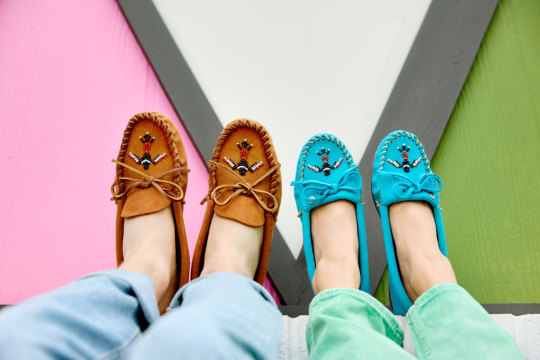
[Photo: Minnetonka]
“I started thinking about all of those stories, and what resonated with me visually,” Skjefte says. The redesign, she says, is much more detailed and authentic than the previous version. “Through the redesign and beading process, we are actively reclaiming and reconnecting our Animikii or Thunderbird motif with its Indigenous roots,” she says. Skjefte will earn royalties for the design, and Minnetonka will also separately donate a portion of the sale of each shoe to Mni Sota Fund, a nonprofit that helps Native Americans in Minnesota get training and capital for home ownership and entrepreneurship.
Some companies go a step farther—Manitobah Mukluks, based in Canada, has an Indigenous founder and more than half Indigenous staff. (While Minnetonka is actively recruiting more Native American workers, the company says that employees self-report race and it can’t share any data about its current number of Indigenous employees.) Beyond its own line of products, Manitobah also has an online Indigenous Market that features artists who earn 100% of the profit for their work.
White Bear Moccasins, a Native-owned-and-made brand in Montana, makes moccasins from bison hide. Each custom pair can take six to eight hours to make; the shoes cost hundreds of dollars, though they can also be repaired and last as long as a lifetime, says owner Shauna White Bear. In interviews, White Bear has said that she wants “to take our craft back,” from companies like Minnetonka. But she also told Fast Company that she doesn’t think that Minnetonka, as a family-owned business, should have to lose its livelihood now and stop making moccasins.
The situation is arguably different for other fashion brands that might use a Native American symbol—or rip off a Native American design completely—on a single product that could easily be taken off the market. Benjamin says that she has also worked with other companies that have discontinued products.
She sees five steps in the process of reconciliation. First, the person or company who did wrong has to acknowledge the wrong. Then they need to publicly apologize, begin to change behavior, start to rebuild trust, and then, eventually, the wronged party might take the step of forgiveness. Right now, she says, Minnetonka is in the third phase of behavior change. The brand plans to continue to collaborate with Native American designers.
The company can be an example to others on how to listen and build true relationships, Benjamin says. “I think that’s the only way that these relationships are going to get any better—people have to sit down and talk about it,” she says. “People have to be real. People have to apologize. They have to want to reconcile with people.”
The leadership at Minnetonka can also be allies in pushing other companies to do better. “My voice is important at the table as an Indigenous woman,” Benjamin says. “Lucie’s voice is important. But at tables where there’s a majority of people that aren’t Indigenous, sometimes those allies’ voices are more powerful in those spaces, because that means that they’ve signed on to what we’re saying. The power has signed on to moving forward and we agree with ‘Yes, this was wrong.’ That’s the stuff that’s going to change [things] right there.”"
-via FastCompany, February 7, 2024
#indigenous#indigenous artists#indigenous art#moccasins#thunderbird#native american#native american art#cultural appropriation#indigenous peoples#cultural representation#minnesota#minnetonka#minneapolis#red lake nation#ojibwe#anishinaabe#reconciliation#fashion#fashion news#good news#hope#indigenous designers#native artist#indigenous artist
1K notes
·
View notes
Note
I’ve seen Palestinians refer to their homeland as Occupied Palestine and “Israel” as the occupation, to better illustrate the settler colonial history of “Israel” and deny it legitimacy. As “America” is also a settler colony, would it be accurate to refer to the so-called “USA” in general as Occupied Turtle Island/the American Occupation or is that terminology specific to Palestine?
Turtle Island is the name given to North America by the Anishinaabe, though it's certainly not the only indigenous name. The Anishinaabe/Ojibwe/Chippewa just happen to be one of the largest native group so a lot of our terms are more easily popularized.
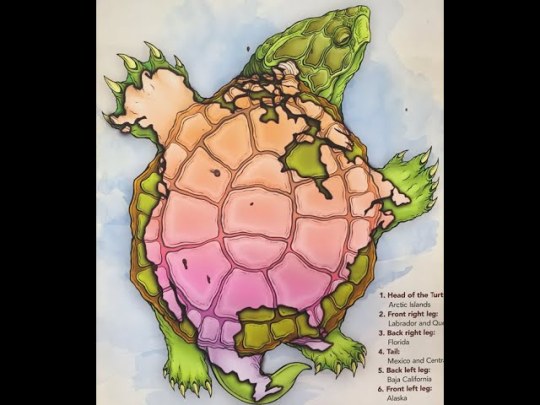
And I'd say yes and no as for it's accuracy tbh.
Like with Palestine, you have to be Very Clear when differentiating the people of Turtle Island and our wants from the US government and the people who support the US government.
You can't support Palestinian liberation and the existence of the state colonizing them. In the same way you can't claim to support Native liberation and Turtle Island but still want to remain our colonizer.
It's one thing to say you support native sovereignty, it's another entirely to realize that support in practice would mean calling & working for the US to be dismantled; it means Choosing to be a person from Turtle Island instead.
So yes, call it Turtle Island, but say it with the understanding and gravity of it.
Start by learning 5 medicinal plants and 5 edible plants in your area, figure out how you can support local tribes. Learn how to be from Turtle Island instead of the USA. Find values and principles to believe in that are your own and not just moralized propaganda.
The less dependent you are on the US, the less freedom you realize you have within it.
#asked#answered#turtle island#settler colonialism#colonization#decolonization#Decolonize#ojibwe#chippewa#Anishinaabe#anishinaabemowin#first nations#native american#ndn
817 notes
·
View notes
Text
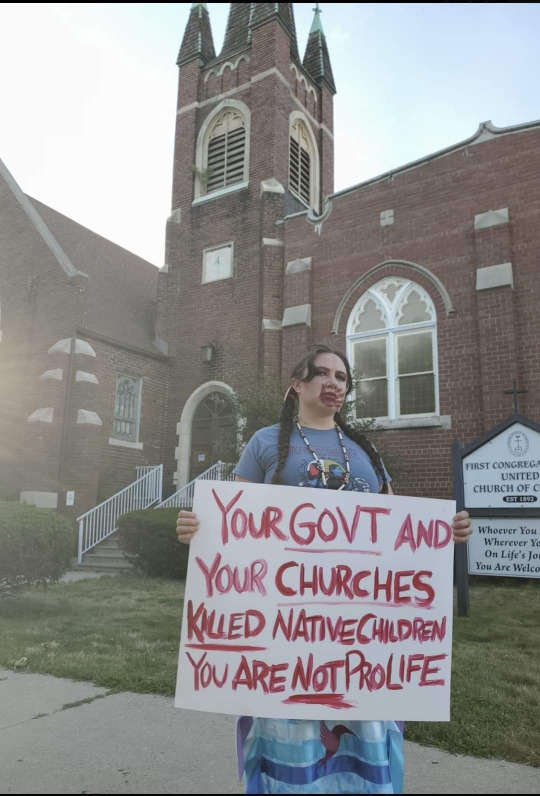
YOUR GOVERNMENT AND YOUR CHURCHES KILLED NATIVE CHILDREN
YOU ARE NOT PRO LIFE
#icwa#every child matters#protect native children#protect icwa#native american#indigenous#ndn#anishinaabe
3K notes
·
View notes
Text

Native land in native hands
1K notes
·
View notes
Text
It took more than a decade of litigation, but 21 Anishinaabe communities along the north shore of Lake Huron in Ontario will finally access a fair share of the wealth generated on their lands over the past 173 years.
The Robinson-Huron Treaty signed in 1850 promised its Indigenous beneficiaries annual payments in exchange for the right to use their lands.
A clause in the treaty explicitly tied the value of the annual payments to resource revenues.
Northeastern Ontario mining, lumber and fishing industries generated billions of dollars in profits over the past two centuries, but annual payments to First Nations were capped at 4 dollars per person in 1874 and haven't increased since.
In 2018, the Ontario Superior Court of Justice ruled that the Crown had a duty to increase annual payments to the beneficiaries of the Robinson-Huron Treaty. [...]
Continue Reading.
Tagging: @politicsofcanada
615 notes
·
View notes
Text
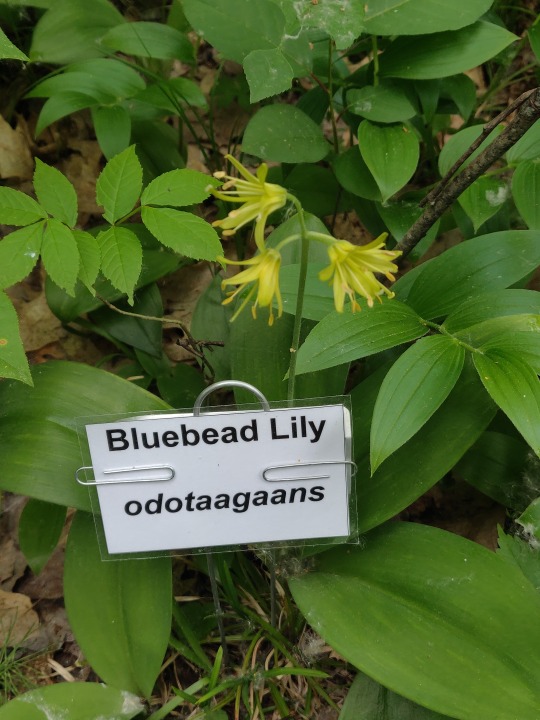



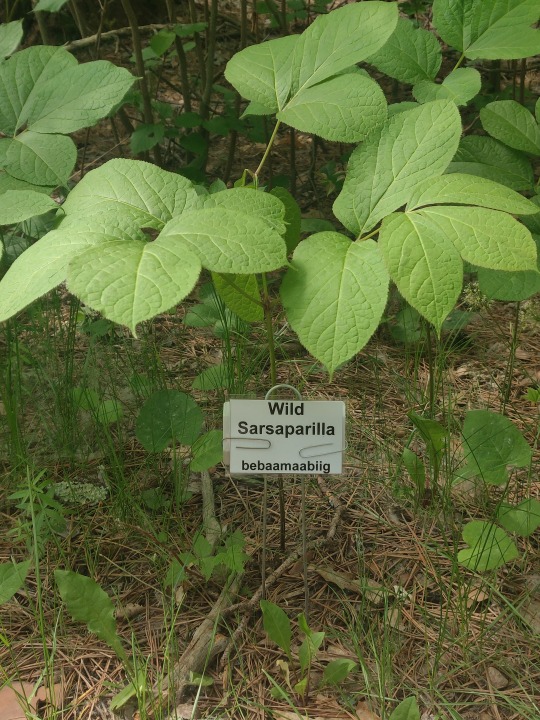
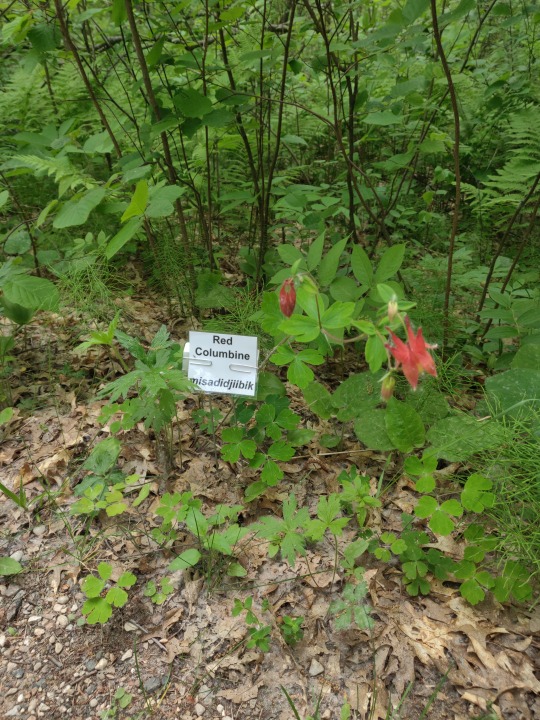
Bog plants, with their names in Ojibwe
#plants#bog#botany#nature#nature photography#photography#ojibwa#ojibwe#anishinaabe#minnesota#midwest#forest#flowers#wildflowers#mine#native american#land back
599 notes
·
View notes
Photo


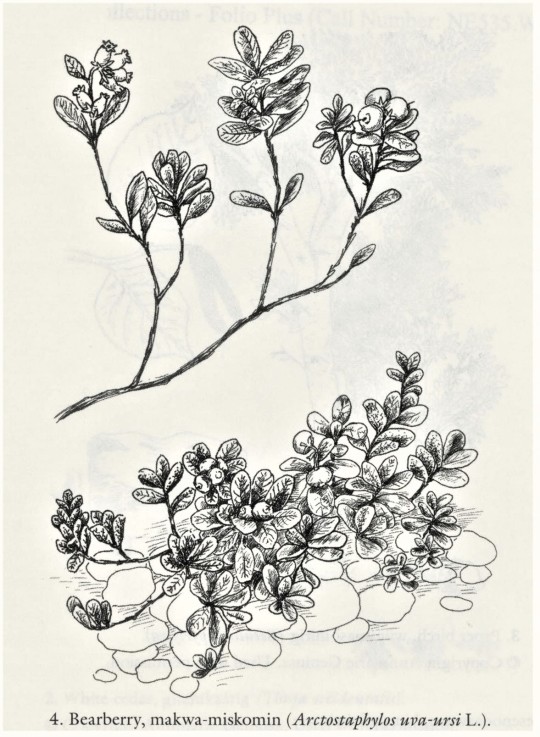


(Decolonizing) Science Saturday
This Saturday we are sharing some illustrations from our first edition copy of Wendy Makoons Geniusz’s book, Our Knowledge is Not Primitive: Decolonizing Botanical Anishinaabe Teachings. The botanical illustrations are provided by the author’s sister, Annmarie Geniusz. Published in 2009 by Syracuse University Press, the book is part of their series The Iroquois and Their Neighbors. Established by the press in 1975, the publication series’ primary scope is Haudenosaunee (Iroquois) scholarship, but it also focuses on uplifting the voice of Indigenous scholars’ work in contemplating their own culture.
As an academic raised in the Anishinaabe culture, Geniusz is particularly well suited to critically examine the Western scientific lens through which Indigenous botanical knowledge is often presented in the Academy. Genuisz, who got her undergraduate degree here at UWM, is the former director of the American Indian Studies program at University of Wisconsin-Eau Claire, and currently teaches Ojibwe language there.
View more of our Science Saturday posts here.
You can find more posts on our Native American Literature Collection here.
-Olivia, Special Collections Graduate Intern
#Science Saturday#Our Knowledge is Not Primitive#Wendy Makoons Geniusz#Wendy Geniusz#Annmarie Geniusz#Anishinaabe#Ethnobotony#Decolonization#Syracuse University Press#The Iroquois and Their Neighbors#Indigenous Scholars#Anishinaabe-gikendaasowin#Native American Literature Collection#olivia
4K notes
·
View notes
Photo

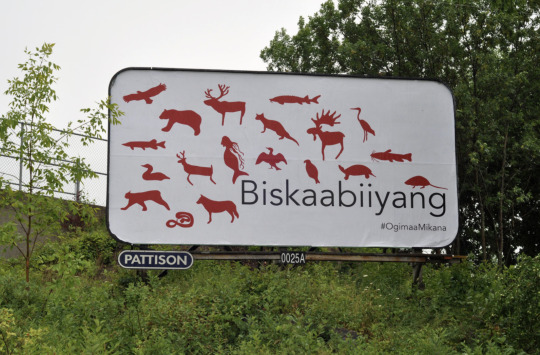


Ogimaa Mikana. Don’t be shy to speak Anishinaabemowin when it’s time. Bayfield St., Barrie, Ontario; Biskaabiiyang. North Bay, Ontario; Untitled (All Walls Crumble). Ottawa, Ontario; Anishinaabe manoomin inaakonigewin gosha. Peterborough, Ontario.
Ogimaa Mikana is an artist collective founded by Susan Blight (Anishinaabe, Couchiching) and Hayden King (Anishinaabe, Gchi’mnissing) in January 2013. Through public art, site-specific intervention, and social practice, we assert Anishinaabe self-determination on the land and in the public sphere.
The Ogimaa Mikana Project is an effort to restore Anishinaabemowin place-names to the streets, avenues, roads, paths, and trails of Gichi Kiiwenging (Toronto) - transforming a landscape that often obscures or makes invisible the presence of Indigenous peoples. Starting with a small section of Queen St., re-naming it Ogimaa Mikana (Leader's Trail) in tribute to all the strong women leaders of the Idle No More movement, the project hopes to expand throughout downtown and beyond.
“The Anishinaabeg endure. We do so through settler colonial time, and across space. We do so in contention. Untitled (All Walls Crumble) considers this movement. To be Indigenous in the city is so often a struggle for recognition, to be seen, and to resist the erasure that is common in Toronto, Montreal, Ottawa, etc. Yet with recognition also comes appropriation and co-optation. In this unease, we consider the benefits of erasure, or at least, covert movement.
Inspired by stories of our relatives and ancestors counting coup, and Basil Johnson’s description of warfare more generally, the Ogimaa Mikana Project considers the tension between visibility and invisibility to challenge settler colonial logic. Against a crumbling wall holding up Ottawa’s major highway - scheduled for demolition and replacement - we draw attention to the ways the settler state recycles itself, and by extension, affirms its legitimacy. We see it and resist in provocative ways that mirror a there/not there presence.
Against this crumbling wall, we reclaim space for an anti-recognition: to speak to each other, as Anishinaabeg, as communities pushed out by gentrification, as the colonized, and offer a refrain and a sign of defiance: “Wakayakoniganag da pangishin. Nin d'akiminan kagige oga ahindanize.”
#Ogimaa Mikana#susan blight#Hayden King#anishinaabeg#anishinaabe#Anishinaabe artist#anishinaabeg artists#Anishinaabe Art#indigenous art#INDIGENOUS CONTEMPORARY ART#contemporary art#public art#place-naming#intervention#art intervention#contemporary anishinaabe art#indigenous collective#indigenous artist collective#Anishinaabemowin
855 notes
·
View notes
Text
the word for insects (worms and germs) in Ojibwe is “manitoosh” which literally translates to “tiny cute spirit”.
I think this is amazing and also beautiful
#orb pondering#wizard#wizard orb#wizard pondering his orb#wizard posting#wizardcore#wizardposting#pondering my orb#botany#ojibwe#anishinaabe#Anishinaabemowin#entomology#insects
1K notes
·
View notes
Text
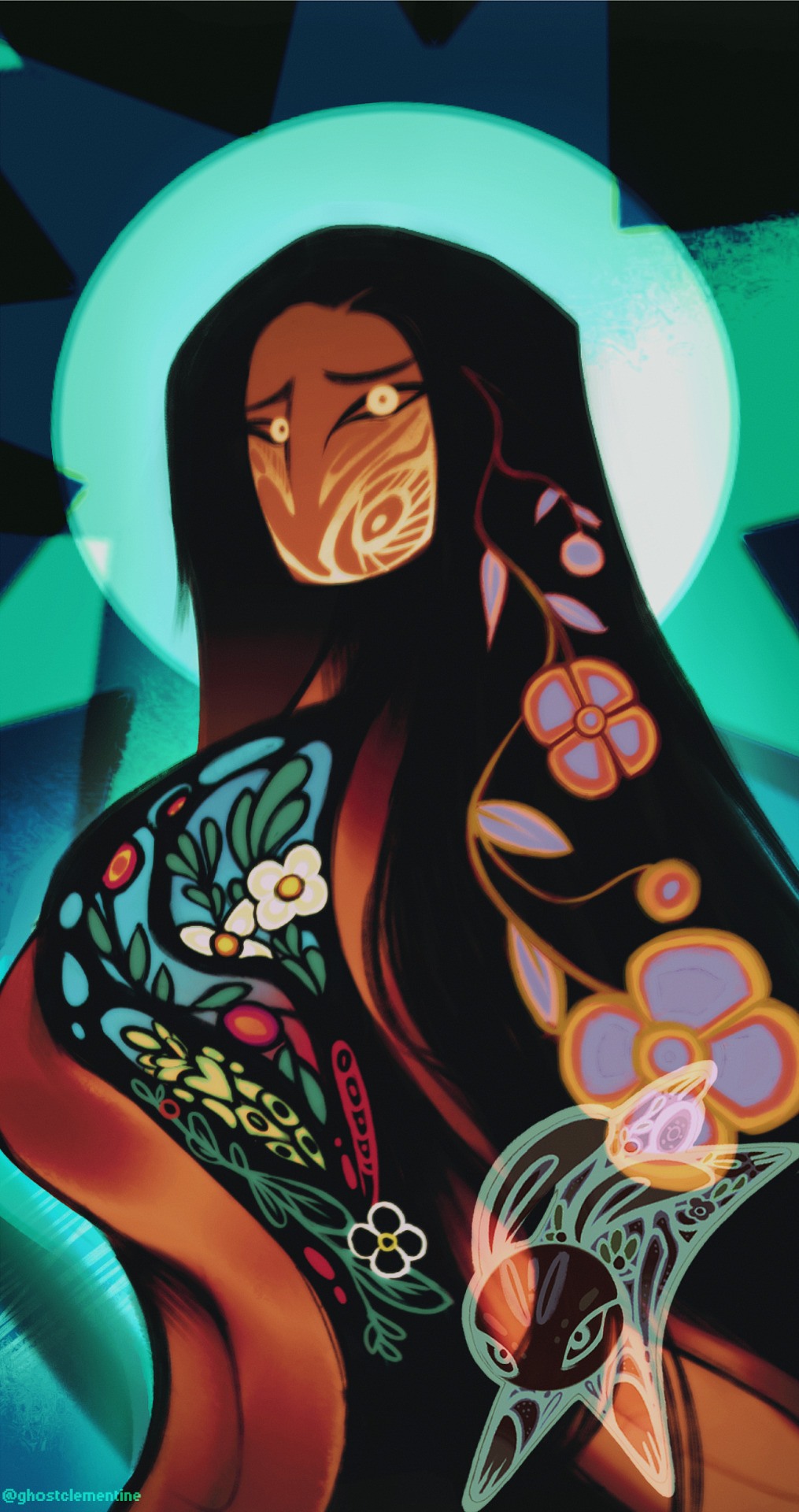
🐇👻 jiibayaabooz 👻🐇
• nanabozho beloved little brother who looks after the spirits in the spirit world.
(2021)
#my art#ghostclementine art#digital art#artists on tumblr#art#digital drawing#digital artist#anishinaabe#indigenous#indigenous art#indigenous artist#indigenovember#native artist#native art#ndn art#rabbit#bunny#spirit#beadwork#ojibwe#saulteaux#woodlands style
282 notes
·
View notes
Text


Norval Morrisseau (Bingwi Neyaashi Anishinaabek First Nation, 1931-2007)
Bear Father, Bear Son, 1989
Acrylic on canvas, 121.9 × 91.4 cm (48 × 36 in.)
on display at Museum of Fine Arts, Boston
https://collections.mfa.org/objects/696834/bear-father-bear-son
“Morrisseau once described this painting as ‘Bear Gives Knowledge to Man. Man Gives Knowledge to Son,’ pointing to themes of kinship, teaching, and transformation. Against a symmetrical, yellow background, curved blue lines weave together humans, animals, insects, and orbs. Bodies filled with blocks of color slip into each other, obscuring where one figure begins and the other ends. The bear, related to Anishinaabe cosmologies and family organizational structures, has wide eyes, pointed teeth, and a strong back that supports the other beings. Bears were significant to Morrisseau, having personal connections with them through religious experiences while growing up at Sand Point reserve near Lake Nipigon, Ontario.
Now recognized as the most influential First Nations artist to work in traditional Western painting, Morrisseau invented a style, visualizing Anishinaabe histories and powers of the natural world. His flowing black outlines, swelling circular forms, and vibrant colors have inspired generations of artists.”
#animals in art#20th century art#bear#Indigenous art#First Nations art#Native American art#Canadian art#Norval Morrisseau#Anishinaabe#modern art#1980s#Museum of Fine Arts Boston#museum visit#painting
39 notes
·
View notes
Text

"Note to reader:
This piece is meant primarily for non-Indigenous people living on Indigenous lands. It is supposed to confront, while simultaneously comforting your uneasiness around land back and reparation conversations and actions. Please take your time in reading this, exploring where in your thoughts and body your discomfort shows up. Acknowledging and unpacking how it makes you feel is an important part of personal growth. Also this is only an opinion piece: recognizing the diversity of Indigenous teachings, governance and lived experiences means that Indigenous people will have different interpretations of this topic. "
When grandmothers and knowledge keepers say it, I tend to think it means more the stewardship and protection of mother earth. When Indigenous political leaders say it, it often means comprehensive land claims and self-governing agreements. No matter what meaning is attached, we as Indigenous nations have an urge to reconnect with our land in meaningful ways.
This is primarily about the First Nations of Turtle Island, but I believe the premise of it applies to all indigenous people harmed by colonialism worldwide. Simply apply this logic to the place where you are.
And it's a Very good starting point for understanding the concept of Landback. It has some ways you can start supporting Landback and even lists accounts to follow. Please click and read though it~
#first nations#native american#indigenous#ndn#native#n8v#decolonization#colonization#landback#reblog#boost#allies#ojibwe#chippewa#anishinaabe
83 notes
·
View notes
Text
Fun fact: in Anishinaabemowin, the term for a cat purring is "nagamo gaazhagehns" / "nagamo biizhehns" / " nagamo boozhehns" (different dialects have varying words/spellings for a house cat)
But the main thing is that "nagamo" is the verb for "he/she/that one sings"
Cat purring in Anishinaabemowin is essentially called "cat singing"
#anishinaabemowin#ojibwemowin#ojibwe#anishinaabe#indigenous languages#the words for cat also are fun#gaazhagehns comes from the verb 'gaazhage' which means 'he/she/that one eats greedily or is gluttonous#so gaazhagehns translates roughly to 'little greedy eating one'#and boozhehns/biizhehns are the diminutive versions of the the word for a lynx (bizhiw) because#--that was the example of a feline that existed in our language/world when domestic cats were introduced to us#so we just called them 'tiny/baby lynxes'#i love anishinaabemowins maliability and ability to just create words to address new things#nish tag#linguistics#original posts#indigenous tag
226 notes
·
View notes
Text
More art of Nanabozho bc he is so silly and scrimblo!~

A doobius little creature getting up to mischief
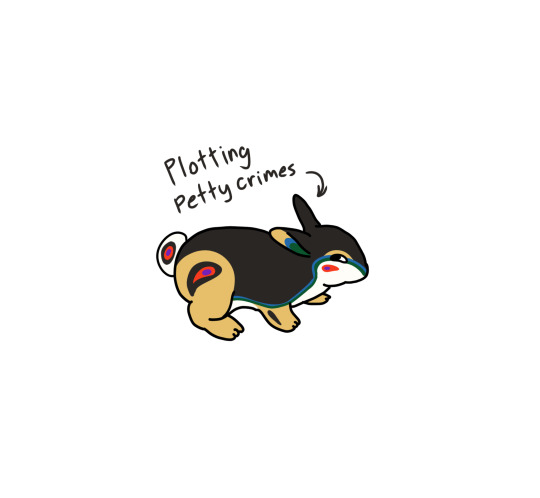
#art#digital art#nanaboozhoo#nanabush#nanabozho#wenabozho#anishinaabe#anishinaabeg#anishinaabe art#anishinaabe artist#ojibwe art#ojibwe#ojibway#ojibwa#first nations#native american#native#indigenous#indigenous art#indigenous artist#furry#furrydrawing#furry community#furry art#rabbit
37 notes
·
View notes